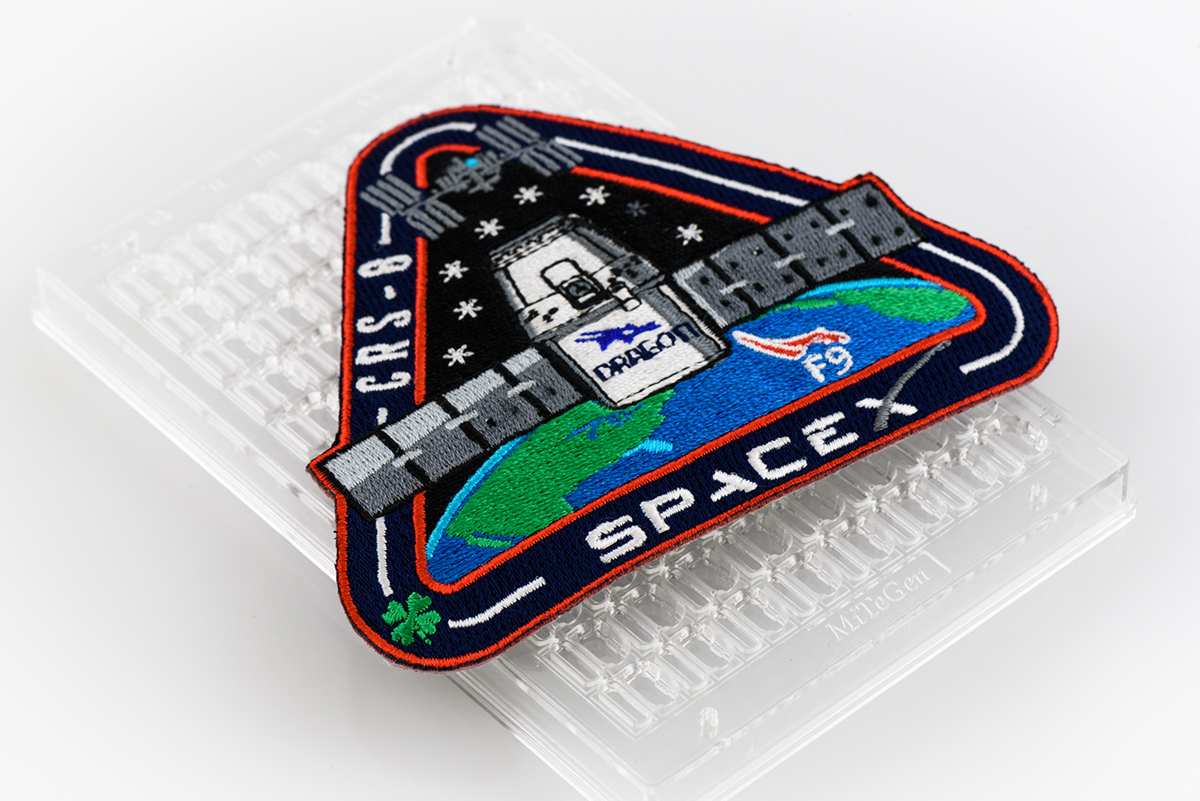Humanity helper: CHESS-made device rode into space
By Tom Fleischman

Better pharmaceuticals are out of this world: A new crystallization plate, developed and tested at the Cornell High Energy Synchrotron Source, or CHESS, hitched a ride to outer space and is helping a major drugmaker learn about protein structure.
On April 8, the In-Situ-1 crystallization plate – developed by Robert Thorne, professor of physics, and the company he founded, MiTeGen, LLC – was used in experiments for Eli Lilly onboard the history-making SpaceX CRS 8 mission.
“It was personally exciting to me,” Thorne said, “because the U.S. space program of the 1960s and 1970s was one of the reasons I became a scientist.”
For the last 20 or so years, Thorne has been working on problems related to determining the structure of biomolecules. To tackle these problems, he and his group have used X-ray diffraction to understand the make-up of the crystals they’ve produced. Much of the X-ray work has taken place at CHESS - specifically MacCHESS, the macromolecular diffraction facility.
With a world-class X-ray facility on campus, doing the crystallography hasn’t been a problem. The challenge, however, for the Thorne group and for X-ray crystallographers worldwide is actually growing high-quality crystals. Moreover, the plastic microplates in which the crystals are grown have made it very difficult to assess crystal quality, Thorne said.
“It’s the quality of their X-ray diffraction that ultimately determines whether you’ve got the crystals you need,” he said. “But you couldn’t do X-ray diffraction on crystals in these plates, because the plastic of the plate produced more scattering than the crystals did.”
Thorne has overcome that problem – again with a big assist from CHESS. Motivated by initial work from his Cornell group, MiTeGen developed the In-Situ-1, which allows X-rays to pass through without diffraction, thanks to ultra-thin yet vapor-impermeable films of UV and X-ray transparent plastic.
And due to a patent-pending liquid-retention ledge – similar to the top of a bottle of hot sauce – and vapor microchannels, the crystal-producing fluids stay in place, even if the plate gets turned upside down or sideways, bumped or dropped.
“It will work with everything,” said Thorne. “People don’t have to buy $100,000 worth of equipment to work with microfluidics. In these simple, inexpensive plates, they can do hanging drops and sitting drops, they can hold the plate vertically for X-ray work, and they can grow their crystals and then ship it by conventional courier to the synchrotron.
“It’s a killer product,” he said, “but as with all products, it takes time to catch on.”
The In-Situ-1 got a boost – literally and figuratively – this past spring aboard the SpaceX rocket. According to Thorne, Eli Lilly regularly sends crystallization experiments to the International Space Station, and contacted MiTeGen to see if they could use the plate. The consortium tested it prior to the rocket launch and decided to send it into space.
Thorne’s devices ended up being sent on a history-making flight: The SpaceX CRS 8 was the first to land its first-stage rocket on a barge in the middle of the ocean. And although details aren’t available, a MiTeGen spokesperson said results from Eli Lilly’s experiments aboard the ISS U.S. National Laboratory were “positive.”
Thorne said that for the development of new tools and methods for crystal growth and crystallography, CHESS has been invaluable.
“It’s a great place to go and mess around, if you’re trying to develop new technologies or new scientific approaches,” he said. “CHESS is more flexible than comparable X-ray sources in the kinds of experiments they’ll let you do, and their technical staff provides great support. It’s hard to find a better place.
“It’s a tremendous resource for New York, as well as Pennsylvania and the Northeast,” he said. “More companies should take advantage of it.”
CHESS, supported by grants from the Division of Materials Research of the National Science Foundation, is planning its next X-ray run from Oct. 26 through Dec. 13. The facility is in the middle of CHESS-U, a planned upgrade that will extend CHESS’s capacity for cutting-edge, innovative science and technology.
MacCHESS is supported by both the NSF and the National Institutes of Health.
Media Contact
Get Cornell news delivered right to your inbox.
Subscribe